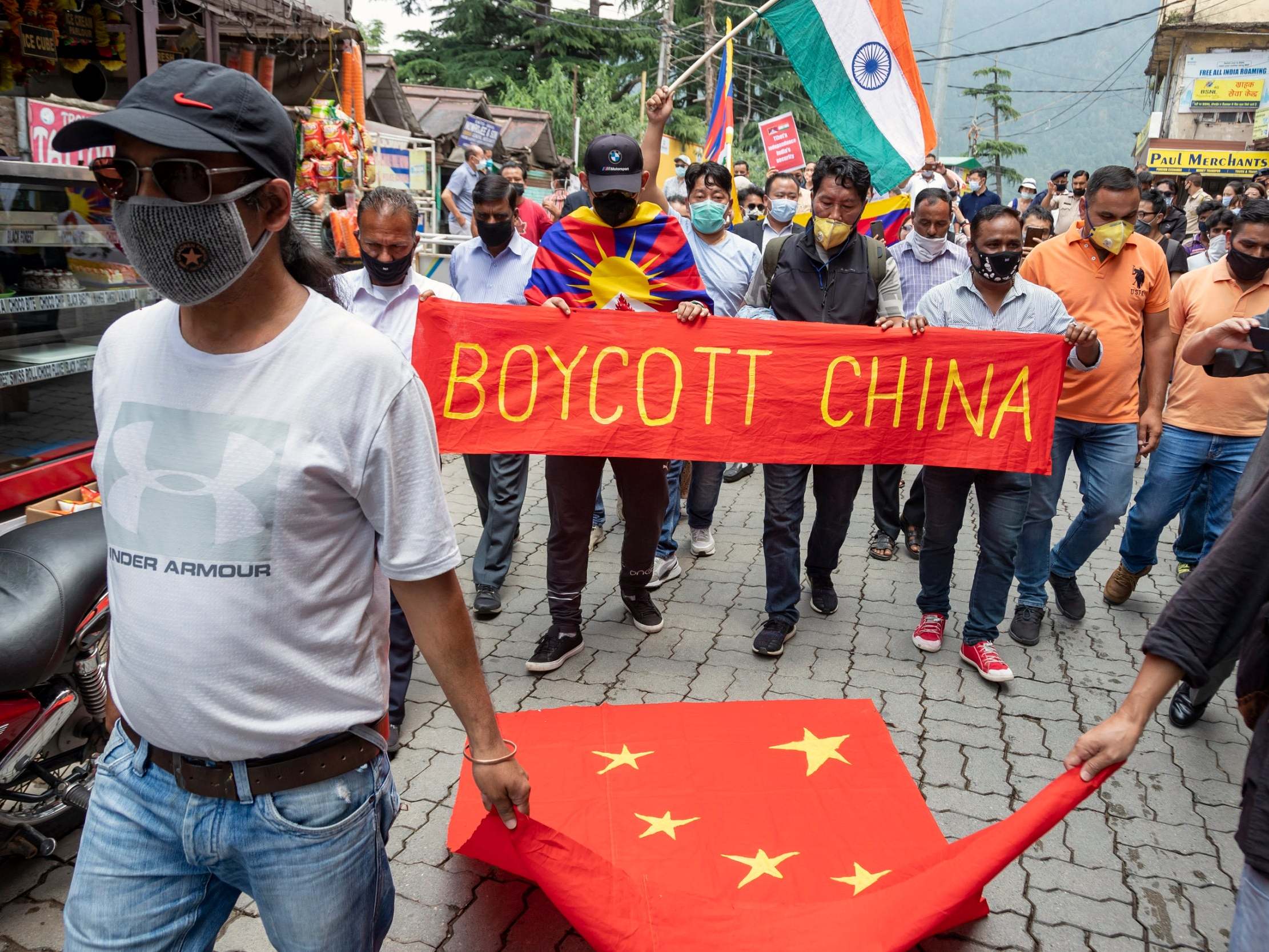China-India standoff: Beijing lays claim to disputed border region after deadly clash
Statement by Chinese foreign ministry comes as protests and boycotts against country break out across India

China has laid claim to the disputed Galwan Valley, where Chinese and Indian troops were involved in deadly clashes this week, saying the border region falls entirely within China.
Both China and India are continuing to use military and diplomatic channels to reduce tensions following a brawl on Monday that resulted in the deaths of 20 Indian soldiers, making it the deadliest confrontation in the area in 45 years.
The Galwan Valley is part of the disputed Ladakh region along the Himalayan frontier. India has blamed China for instigating the fight by developing infrastructure in the valley, which it said was a breach of an agreement regarding the area.
Zhao Lijian, a spokesperson for the Chinese Foreign Ministry, said in a statement on Friday that “the Galwan Valley is located on the Chinese side of the Line of Actual Control in the west section of the China-India boundary”.
He said incursions by Indian troops in the area from early May led to the brawl. China has not confirmed if its side suffered any casualties, but US intelligence analysis suggests up to 35 soldiers may have died in the skirmishes.
Anurag Srivastava, spokesperson for India’s Ministry of External Affairs, declined to comment on Mr Zhao’s claims, but prime minister Narendra Modi said in a meeting with political opposition leaders on Friday that “neither anyone has intruded into our territory, nor took over any post”.
Mr Modi said India was “hurt and angry” about the troop deaths and said the nation wanted peace and friendship, but had the “capability that no one can even dare look towards an inch of our land”.
Hundreds of soldiers from the two nuclear powers fought each other with clubs, rocks and their fists in the freezing cold, but no shots were fired. The soldiers carry firearms but are not allowed to use them under a previous agreement in the border dispute.
A photograph of nail-studded clubs purportedly used by Chinese soldiers in the fight sparked outrage in India, and was condemned as “barbarism” and “thuggery”.
Anti-China protests have been taking place across India, with activists burning images of President Xi Jinping and the Chinese flag, as well as calling for Indians to boycott Chinese goods.
Indian security officials said the fatalities were caused by severe injuries and exposure to subfreezing temperatures.
Mr Zhao also said China was not holding any Indian soldiers, amid media reports that China released 10 soldiers late on Thursday.
Indian officials have denied that any soldiers were in Chinese custody.
Additional reporting by AP
Subscribe to Independent Premium to bookmark this article
Want to bookmark your favourite articles and stories to read or reference later? Start your Independent Premium subscription today.

Join our commenting forum
Join thought-provoking conversations, follow other Independent readers and see their replies